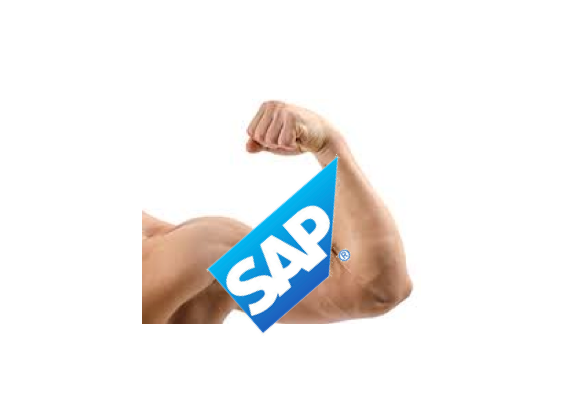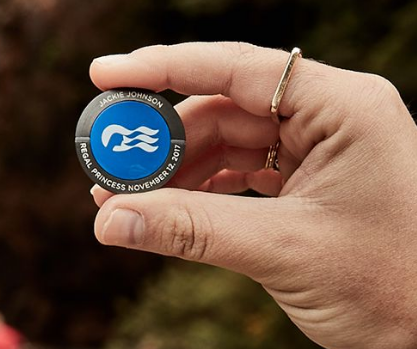
by twieberneit | Jan 28, 2019 | Analysis, Blog |
AI, IoT, and CRM, three acronyms. However, these three belong together and should not be treated or looked at separately. One important reason for this is that companies and organizations can provide significantly better service experiences and, more importantly, results, by combining the capabilities behind these acronyms. Good field service not only gets dispatched smartly but also equipped with the right parts and, ideally, in a proactive manner. This can get delivered by the combination of Field Service, AI, and IoT data. That’s why I found Salesforce’s early December announcement of having added a component “IoT insights” to its Field Service Lightning product quite interesting. As the press release said, this capability enables service agents and representatives to see IoT signals together with other CRM data, so that the triple p of personalized, proactive, even predictive service is possible. After all, Einstein is embedded into Field Service Lightning for quite some time now. Doing so, Salesforce wisely did not implement yet another IoT platform but enabled its system to ingest data from existing IoT platforms, thus sticking to the core competencies of the company. The solution helps in three areas: Enabling of early issue anticipation (rather than detection, which is responsive) and remote diagnosis Providing agents with more relevant information, to speed up issue resolution And automation via rules and workflows. Says Paolo Bergamo, SVP and GM, Salesforce Field Service Lightning: Let me first clarify that we’re not competing with IoT platforms from the likes of AWS IoT or Azure IoT. Our solution extends the value of these platforms – they provide streams of device data that then flow...

by twieberneit | Nov 13, 2017 | Analysis, Blog |
Now that the major waves of Dreamforce 2017 have settled, the announcements and a good part of the running commentary has been delivered, it is time for me to have a look at my pre-Dreamforce predictions. Having been briefed before the event but unluckily not been able to attend (nor having had the time to write this piece earlier, I now have the advantage of having had more ‘thinking time” and can put the main announcements that we were briefed on into a bigger picture. On the backdrop of an IDC study (sponsored by Salesforce) that postulates 3.3 million new jobs and an overall GDP impact of 859 billion dollar by 2022 in the “Salesforce economy”, the announcements basically revolve around one single topic: How to enable the employees (of Salesforce customers and partners) to deliver to this magnitude. They were around Easier consumption of AI technology with Einstein, and improved IoT support, Opening up Trailhead to Salesforce customers in order to support company specific learning maps Enabling Lightning, as the platform to become fully themed, i.e. embrace the customers’ brands. Although technologically different I club the ability to create and easily upload branded mobile apps to the app stores into this Collaboration using Quip, the software that Salesforce acquired about a year ago, and a new partnership with Google And in order to emphasize on the fact that they are serious about enabling people individually, Salesforce resuscitated the dot com prefix “my”. Thus myEinstein, myTrailhead, myLightning, mySalesforce, myIOT and mySalesforce got born. A topic that might be slightly overlooked is covered by two sentences in the announcement of...

by twieberneit | May 19, 2017 | Analysis, Blog |
During the 2017 SAPPHIRE NOW conference SAP told the stunned audience about how they connected some dots to create better value and more intelligent business applications for their customers. In essence SAP lifted the veil on how the company will go ahead with two technologies that will dominate the next years and that are ordinarily treated as different topics. But which, in essence, are like yin and yang. I talk about AI and machine learning on one hand, and IoT on the other. SAP has been fairly quiet on the former and fairly vocal on the latter, although the first announcement was about machine learning powered intelligent business applications, back in November 2016. At that time SAP announced the availability of the machine learning platform for SAPPHIRE NOW 2017. After this, SAP announced SAP Leonardo, the bundling of their IoT portfolio back in January 2017. On day 1 of SAPPHIRE NOW SAP delivered on the November promise by announcing “it’s time for machine learning to take the work out of your work flow. It’s time for billions of devices to go from thinking, to doing. It’s time for SAP Leonardo, the SAP system for digital innovation.’ With this approach they even go beyond only connecting two technologies but they also add Blockchain, Big Data, Data Intelligence and Analytics into one single platform. Whereas one could argue that Big Data, Data Intelligence and Analytics are essentially the same. With this powerful combination, as Holger Mueller, Principal Analyst of Constellation Research, aptly observed, ‘technology for the first time can do more than business best practices want’. To accommodate for this, SAP...

by twieberneit | Jan 25, 2017 | Analysis, Blog |
On January 24, 2017 SAP released its results of their fiscal year 2016 – and the fourth quarter thereof. In a nutshell SAP: Delivered to its increased 2020 guidance Had an increase of 31 per cent in cloud subscription and support revenue, while still being able to increase the software license and support revenue. Cloud revenue increased especially in Q4 and promises to stay at a high level with a very healthy backlog Increased its full year operating profit by 20 per cent to 5.12 Billion Euro (IFRS) Has a strong backlog of cloud bookings This success has a slightly negative effect on the company profitability while it negotiates the shift from license revenue to subscription revenue while being in an investment mode. It, however, seems to be driven by an increasing adoption of S/4HANA, a strong increase of the Hybris set of CEC solutions, including e-commerce and increasing traction in the HCM space. So it is broad. Based upon the strong delivery of 2016 SAP expects the cloud business to increase by up to 34 per cent in 2017 (all numbers of course at constant currencies) and increases its guidance of revenue and profit for 2017. In line with this the company is also bullish in its mid term outlook to 2020, which it increases, too. My Take Of course the big increase in revenues, expressed as a percentage, is partly owed to the fairly low number. In comparison Salesforce reported 2.14 Billion dollar for their third quarter alone, as opposed to 2.99 Billion Euro for SAP’s fiscal year. Oracle reported 798 million dollars in their FY Q1...

by twieberneit | Jan 18, 2017 | Blog |
A few years ago Disney embarked on a massive customer experience journey that included the introduction of a ‘Magic Band’. Disney at that time followed (and likely still does) an idea that can be paraphrased as looking at everything through the eyes of the customer and pay attention to all details. During his 2016 CRM Evolution opening keynote Dennis Snow explained this concept and implementation in depth (see also my earlier CRM Evolution post). Dennis talked about the Disney way of creating great customer experiences, which basically follows three simple rules Design your processes with the customer in mind, not with internal/operational priorities; look through the lens of the customer Pay attention to details Create little “Wow Moments”. These add up to a lasting great experience and are easier to achieve than single “big” experiences. To me the most important message that Dennis conveyed is that the simple things and consistency are what matters. Consistently provide little experiences throughout the customer life cycle. He underpinned this with some examples from the ‘ordeal’ of getting out of the park and back into the hotel. Everybody is exhausted, kids may be edgy, riding the bus is usually not fun. What about the bus driver singing some songs or doing a little trivia? The rooms showing some little surprise, like specially folded towels? Another of his core messages was that a company gets loyalty and advocacy only by creating those “wow” moments mentioned above. For this to be effective, however, it must not fail at base priorities. Customer expectations can get mapped to a pyramid. Every customer expects accuracy and availability. These...






